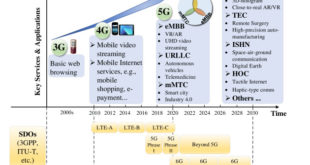In the last few years, data privacy has become a hot-button issue globally, with high profile scandals and data leaks surrounding prominent companies like Facebook and Equifax resulting in greater privacy awareness among both consumers and businesses. On top of that, companies often share this data with third parties that can …
Read More »The Rise of Wearable Technology: A Revolution on Your Wrist and Beyond
Introduction Wearable technology has taken the world by storm, transforming the way we interact with our surroundings and enhancing our daily lives. From smartwatches to fitness trackers, wearable devices have become an integral part of our digital ecosystem. In this blog article, we will explore the burgeoning wearable technology market, …
Read More »Lithium Niobate: Unleashing the Potential of a Versatile Material in Optics and Electronics
In the world of advanced technology, certain materials stand out for their exceptional properties and versatility. One such material that has been making waves in the fields of optics and electronics is lithium niobate (LiNbO3). With its unique characteristics and wide range of applications, lithium niobate is revolutionizing various industries …
Read More »Unveiling the Future: Exploring 6G’s Vision, Requirements, Challenges, and Technology Roadmap
Introduction: 6G, the next generation of mobile cellular technology, is set to revolutionize the way we connect, communicate, and interact with our devices and the world around us. With promises of ultra-high-speeds, low latency, and unprecedented capabilities, 6G holds the key to unlocking a new era of connectivity. In this …
Read More »Super Capacitors: Powering Innovations from Electric Transport to Military Directed Energy Weapons
Introduction: In the world of energy storage, supercapacitors have emerged as a game-changing technology. With their unique properties and capabilities, they are revolutionizing diverse sectors, ranging from electric transport to military applications like directed energy weapons. In this blog article, we will explore how supercapacitors are fueling innovations in these …
Read More »Microwave Photonics: Empowering Next-Generation Military Communications, Radars, and Electronic Warfare Systems for Spectrum Dominance
Introduction: Microwave Photonics, the fusion of microwave and optical technologies, is revolutionizing the field of military communications, radars, and electronic warfare systems. With its unique capabilities and versatility, Microwave Photonics offers the potential for spectrum dominance, providing the armed forces with advanced capabilities for communication, surveillance, and electronic countermeasures. In …
Read More »Booming Synthetic Aperture Sonar (SAS) Systems Market: Revolutionizing Underwater Mapping and Imaging
Introduction: The world beneath the surface of our oceans has long been shrouded in mystery and intrigue. However, thanks to advancements in technology, a new era of underwater exploration and mapping has dawned. At the forefront of this revolution is the rapidly growing market of Synthetic Aperture Sonar (SAS) systems. …
Read More »US Army Project Linchpin developing integrated AI based intelligence, cyber and electronic warfare capability
While the need for convergence of cyberspace operations and electronic warfare is recognized within the Department of Defense (DoD), differences between how these two capabilities are trained, resourced, organized and employed combined with the significant functional level differences between the two have hindered efforts to converge their capabilities. “The …
Read More »Graphical Processing units (GPUs) responsible for success of Deep Neural networks (DNN) in Aerospace and Defense
Deep Neural networks (DNN) or large virtual networks of simple information-processing units, which are loosely modeled on the anatomy of the human brain have been responsible for many exciting advances in artificial intelligence in recent years. The deep learning (DL) algorithms allow high-level abstraction from the data, and this is helpful for …
Read More »DARPA ERI developing breakthrough U.S. national electronics capability for DOD missions to secure its national security
In 1965 R&D Director at Fairchild (and later Intel co-founder) Gordon Moore predicted continued systemic declines in cost and increase in performance of integrated circuits in his paper “Cramming more components onto integrated circuits.” These trends have underwritten the ongoing microelectronics revolution. “Moore’s Law has set the technology community on a …
Read More » International Defense Security & Technology Your trusted Source for News, Research and Analysis
International Defense Security & Technology Your trusted Source for News, Research and Analysis





